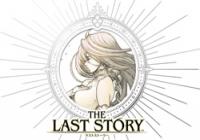With the release of Xenoblade Chronicles in Europe last year, The Last Story has a difficult task ahead of it in matching up to the extremely high standards set by Monolith Soft’s incredible Japanese role-playing game. However, Europeans can count themselves lucky that they are receiving such highly-proclaimed games, especially during a time where the Wii is on the decline and in the final stages of its life.
Main character Zael is a part of a group of mercenaries on Lazulis Island that aspires to be knights and leave the lives of hardship and the loss of loved ones behind. Knights are well-respected by the island’s people, and looked up to by all. Mercenaries, on the other hand, have to search high and low for work to keep them going, having to deal with their possessions being stolen or villages burned to the ground, with society detesting them for the amount of fighting they do. It is the power and high regard of the knights that Zael’s band craves.

Central to all RPGs is the need for an engaging combat system, and The Last Story’s battle mechanics are indeed just that. As this is an action RPG, Zael can be moved around freely, but not before the player gets the chance to see a top-down view of the battlefield first. Prior to encounters beginning in the area, the camera pans out to give a glimpse of where enemies are, as well as highlighting information such as elements they are weak to. With this in mind, the player can then set about forming a strategy from which they can tackle the situation appropriately. By taking cover behind walls and other objects you can go all Solid Snake on your enemies and utilise stealth to sneak up on them and take them out one at a time. This tactical aspect is something designer Sakaguchi-san strived to bestow upon the game’s fighting scenarios, relating it to team sports whereby formations are used to gain the upper hand.
Of course, not all attacks will go as planned, and you will be forced into real-time battles more often than not, with the option of automatically attacking the enemy when up close, or manually inputting every move. The innovative ‘Gathering’ system is unique to Zael in that he can force his enemies to focus all attacks onto him, leaving your AI-controlled team mates to go about their business, casting magic spells or firing arrows. Since spell-casting can take many seconds to perform, enemy attacks will constantly interrupt the process, so drawing the attention to Zael is the key to success. Orders can be given to team mates, in a sort of Final Fantasy XII Gambit-like fashion, each of whom have their own specialised roles, such as mages, archers and melee fighters. Naturally, as a melee veteran, Zael wields a blade the size of him.

Fans will be delighted to know that there are two control methods -- the Wii Remote and Nunchuk or the Classic Controller. However, since there are no motion controls anyway, it will merely come down to whatever is the most comfortable method for the player. Buttons to speed up and skip cut-scenes are very welcomed additions, as well.
There are no shortages of traditional RPG staples, including massive bosses, rewarding side-quests and lots of customisation in both character appearances and equipment. Clothing can be changed and painted, and, shockingly, if you feel like running around town in your underwear you can; such is the freedom the player has! Modifying weapons and armour is central to increasing character strengths, with better parts only obtainable through item drops from enemies.
Creating a believable and convincing world was one of the designers’ goals in developing Lazulis City, the main metropolitan of The Last Story, with the team visiting Italy and France to get an understanding of historical architecture. This city is the base for the players’ adventures, and is truly an expansive location when compared to cities from other RPGs. Changing reactions of passersby, flying rubbish caught up in the wind, and many other altering in-game elements point to the attention to detail that has gone into the game.

What more could a role-playing fan ask for? Well, how about throwing famed musician Nobuo Uematsu-san into the pot as the game’s sole composer? The legend behind the scores for most of the Final Fantasy series, plus a wealth of other games, was assigned the task of producing the soundtrack to The Last Story, where fans of his work will no doubt be able to recognise his trademark tunes and expect to hear amazing pieces that will convey emotion to complement the story.
In contrast to most other RPGs, as well, The Last Story features an online multiplayer mode for two-to-six players in co-operative and competitive battles, so there is clearly a lot to look forward to. Finally, as many will be eager to know, an English dubbing with British voice actors has been confirmed for the game, but there is still no word on the option to switch to Japanese voices as in Xenoblade Chronicles. It probably isn’t too farfetched to suggest that the option will be there, but those who prefer Japanese dubs might want to keep their fingers crossed, just in case.


 Sign In
Sign In 22.01.2012
22.01.2012 




 Game Details
Game Details
 Out now
Out now  Out now
Out now  Out now
Out now  Out now
Out now  SirLink
SirLink 
 Link to this post:
Link to this post:  Subscribe to this topic
Subscribe to this topic Features
Features






 Top
Top

